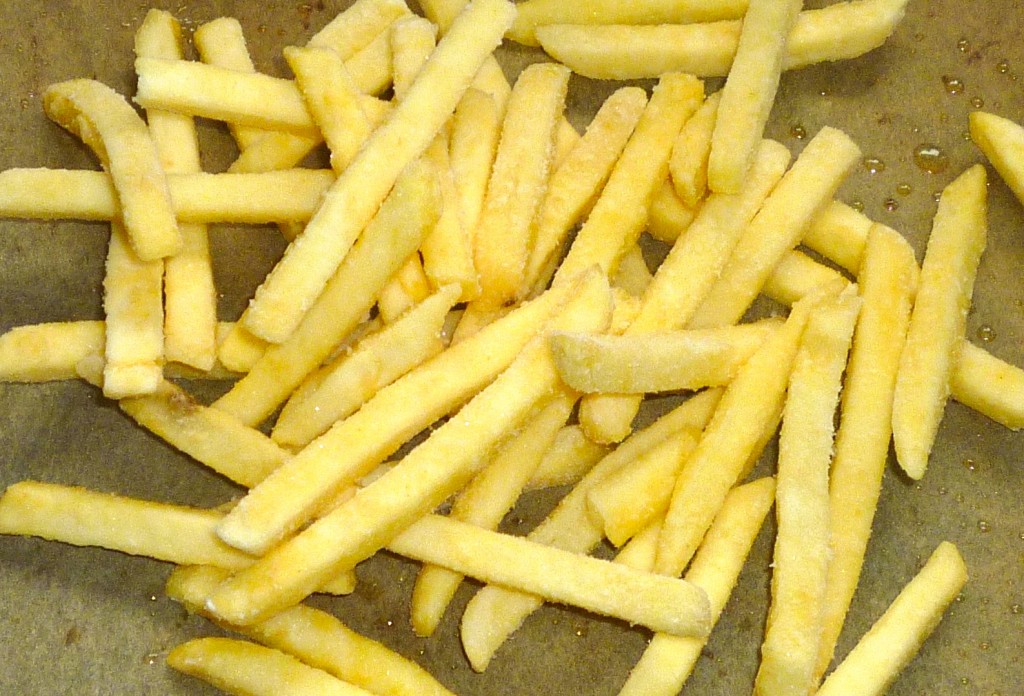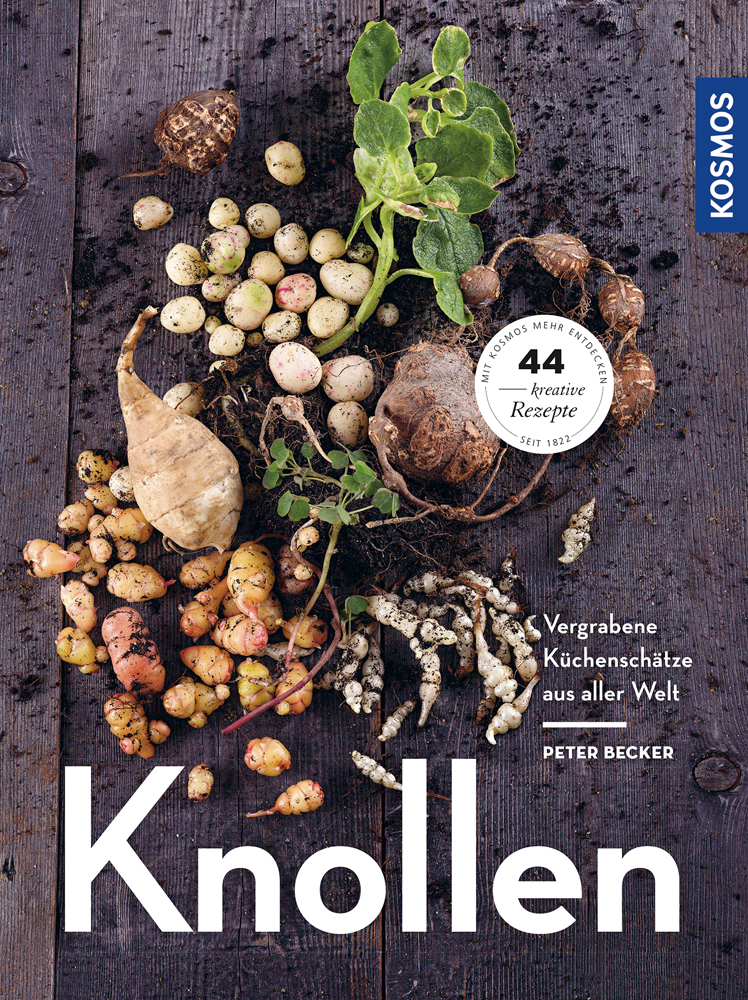In addition to my fascination for unusual types of food, in this project I would also like to fill in the gaping holes in food preparation training, the food pyramid and our whole culinary culture, with numerous delicate forms of tubers that have been seldom used up until now and which we could eat instead of potatoes.
Because: “Looking behind the moon of everyday potato
consumption, whole galaxies of delightful aromas and
possible forms of health prophylaxis open up for me.”
On the basis of this finding I offered my first seminar in 2004 under the name “It need not always be potatoes,” because on the third of our plates where the starch side‐dish is placed, in this country you will find almost nothing but potatoes. Although this monotony may be the easiest way to fill our stomachs and it suits the arrangements of the food trade very well, such a one-sided form of mass consumption is in fact not suitable for omnivorous “life forms” such as us humans. Besides which, huge potato monocultures require the constant use of pesticides and reduce the variety of species in our cultivation landscapes.
Consumers can make all the difference, with their choice of various fresh tubers from the farmers market, instead of frozen french fries!
FROZEN FRENCH FRIES VS. FRESH TUBER VARIETY
On the other hand, there are literally dozens of other plants whose storage organs can just as well meet our requirements for calories but additionally have vital nutrients that are unique to them. And all we have to do to share in their long biochemical success story that goes back millions of years, is eat them.
To start with my comprehensive information on tubers and root vegetables, I will go back in time to the very beginning of civilization, because many potentially useful forms of tubers have never been domesticated.
In the first part of my tuber tutorial I will present 18 alternatives to potatoes in my Kosmos cookbook, “Buried Kitchen Treasures of the World”. There is already a certain amount of infrastructure for these tubers. Some of them are already available on the market, others are imported, and the rest are available from various plant nurseries as seed to cultivate for your own use.
In the second part, “Deeper buried Kitchen Treasures”, I put forward 70 more, hardly known, tubers and root vegetables as new plants for cultivation because this would revolutionize the culinary world, it could change agriculture and world trade on a long-term basis, and expand the range of what we eat in a way that suits us.
Both books will be published in 2016.
I`m seeking publishing houses in the U.K. or U.S.A. to publish these books in english.
This is not about simply replacing potatoes with another starch tuber, this extensive curriculum opens up a whole new world! In my “Tuber Kitchen” I`ve been processing, from top left to bottom right: the chicory root into the most delicate BBQ Sauce, am preparing fantastic ice cream of dandelion root, bake incredible cookies with truffle potatoes and violet flowers and developed a unique cheesecake with purple sweet potatoes.
These plants I introduce could be the answer to the question as to how agriculture will change when the sea level rises by 2 meters and tolerance to salt water becomes more important than the greatest possible yields.
Or, which cultivated plants flourish best at high altitudes?
These vegetables are good candidates for niche products so that farmers as cultivators with a unique feature could set their own prices and also be able to get 100% of the money through direct marketing.
Once these tubers have a market value, this will also encourage intensive research and lead to important scientific findings as a result.
I would like to set up a network for tuber science with the following links, which will be updated constantly, and at the same time put out a “dragnet” to find specialists for the individual plants.
Worldwide, who has done the most intensive research on growing the around 90 tubers and root vegetables that exist? Where can you find seeds or seed tubers to grow your own, or buy them as vegetables?
Which communities, like somewhere in Africa, could specialize in sending to Germany a kilo- or hundredweight of tubers, at Fairtrade terms and conditions, so that I would have the appropriate material for my seminars?
Which gardening club or farmer would be willing to sponsor a particular type of tuber and grow it for me or test its cultivation?
If you have any suggestions, tips for new links, news of dealers or interested gardeners, then please send me an e‐mail at: info@newtritionink.de
Links to follow soon
My english Cucina Tuberosa Blog








